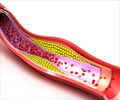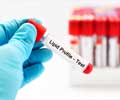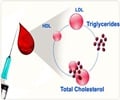The next time you would like to thank somebody for a complete set of 20 digits after counting your newborn’s fingers and toes, cholesterol might be all that you need to be grateful for!
The next time you would like to thank somebody for a complete set of 20 digits after counting your newborn's fingers and toes, cholesterol might be all that you need to be grateful for !
A new study conducted in mice has now found that cholesterol plays a very vital role in development of fingers and toes. The attachment of this pivotal chemical to a specific development protein is the key to proper digit development. Mice devoid of cholesterol developed digits in wrong places, in addition to extra digits. The results of this interesting study have been found in the online edition of the Proceedings of the National Academy of Sciences.Although the developmental protein named Sonic hedgehog, has been identified as early as 1990, the association of the protein with cholesterol has remained unclear. Previous studies had established that mice lacking the protein developed only a single digit, commonly in the form of a thumb on the front paw.
A specialized group of cells situated at the posterior part of the developing limb bud produce the protein. High concentrations of the protein are found at the site of synthesis. Gradually, it diffuses across the limb bud. The identity of the other digits is dictated by the decreasing concentration of the protein. That a cholesterol molecule had to be attached to the protein, for it to work properly, was found out by further research.
'Questions have remained about what regulates the Sonic hedgehog gradient. And we've been working on that for a number of years. In fact, Sonic hedgehog is the only protein known to be modified by cholesterol,' said Chiang, a senior researcher who led the study.
To further establish the role of cholesterol in functioning of the protein, the researchers created mice that had an altered form of the Sonic hedgehog protein. This ensured that the cholesterol molecule would remain free, as it cannot attach itself to the modified protein.
As expected, mice with the modified protein developed digits that were out of place or malformed digits. The index digits were further stunted and out of shape, seemingly more like a normal thumb. Special mice produced in which only 50% of the proteins could attach to cholesterol developed normal digits in addition to duplicated digits.
Advertisement
Polydactyly, a condition characterized by presence of extra digits, could by triggered by movement of Sonic hedgehog to a place, where it is normally not seen. The exact cause of polydactyly in humans is not completely understood. Although researchers now believe that mutations in some part of the Sonic hedgehog signaling pathway could be responsible for the same.
Advertisement
With our improved understanding of the wide-ranging actions of Sonic hedgehog and developmental biology, we could soon have valuable clues about prevention of birth defects, in the forth-coming years.










